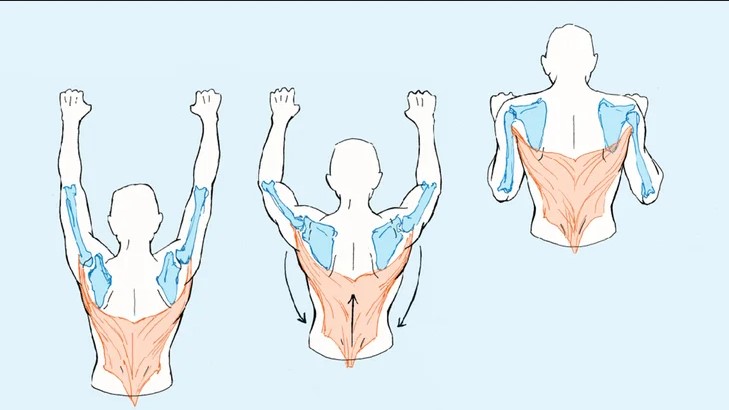Because pull-ups are so remarkable, many athletes aspire to perform them. It's likely that you'd like to do one if you can't do both. If you have the option, consider the single-arm or weighted version. Once you can perform a few pull-ups, it's simple to understand how you could progress to more. But where do you begin if you can't do even one?
The challenge is getting access to all the muscles required for the task; the majority of people have everything they need to lift their own weight. People frequently rely on the upper trapezius and elbow flexors, such as the biceps brachii, which only partially succeed in lifting the entire body's weight. Other crucial muscles, such as the infraspinatus and the latissimus dorsi, may be inactive or difficult for the brain to activate.
The line of strength that runs from the rock climber's hand all the way down to his lower back is seen in the picture below. The latissimus dorsi muscle, shoulder extensors, external rotators, hand, forearm, and elbow flexors, as well as the remainder of the core, are all included in this system of muscles. We can paddle, climb, and swim for hours after turning all of this on—all without doing a single pull-up.
 |
| Simon Hibbeler – KinetiK Athlete bouldering climbing |
The latissimus is a strong muscle that lifts the waist up to the arms, depresses the clavicle and scapula, the shoulder girdle, and pulls the upper arm bones into shoulder extension and adduction (see the illustration below). When learning to perform a pull-up, this muscle should be your primary area of concentration. When you squeeze your arm down as if you were trying to squeeze the juice out of a grapefruit in your armpit, you should feel a bulk of muscle tissue contract that you can grab with both hands. This is your lat. You can find it by feeling with your fingertips at the back of your armpit and side ribs. You can increase the contraction by simultaneously lifting the waist on the same side up toward the armpit.
The moves listed below are made to safely get harder. You can use the introductory exercises as warm-ups for more challenging ones as your strength grows. Depending on your level of entrance, this process could take a few weeks to many months. Furthermore, these exercises aren't just for show; pull-ups and the workouts that prepare you for them can help you increase your strength-to-weight ratio, tone your upper body, and prepare for a variety of sports and hobbies.
Source: Outside


Comments
Post a Comment